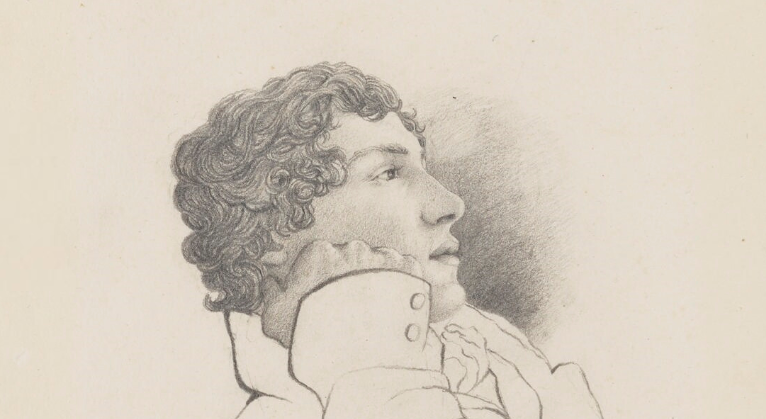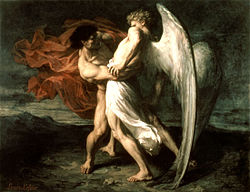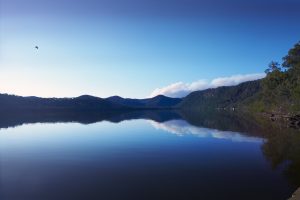Compared to all the better-written and more erudite articles that mark the bicentenary on February 23 of the death of John Keats (1795-1821), this probably rates as a back-of-the-fag-packet job. No matter. The aim is not to make a big impression on the literary world or the blogosphere, merely to record my personal appreciation of Keats and the pleasure his poems and letters have given me over the years, and continue to give me.
And to say why I think he’s still worth reading, particularly today.

Much of the pleasure I take from Keats arises from his spontaneity, by which I mean the freshness and immediacy with which he engages with people and literature. As these qualities, by definition, don’t grow stale, they have helped to underpin his appeal to successive generations of readers.
They are more than incidental characteristics, however. As Keats matured, certain ideas became integral to the way he wrote and thought about poetry, and all can be linked in one way or another to the notion of spontaneity (not a term he used himself). It’s not too much of an exaggeration to say that, for Keats, spontaneity, variously defined, became both a creative and intellectual principle.
This, for my money, is a key reason for reading Keats today. If, like me, you feel suffocated by the post-modern orthodoxies and sterile polarities that prevail in so much our public discourse, you may find his spontaneity to be just the antidote you need—creatively and intellectually.
A SENSE OF EXCITED DISCOVERY
Keats’ spontaneity was, of course, a natural attribute, but the extent to which it characterised his thought and behaviour may be explained by his background. The circumstances of his early life and education are well known, and I’m not going to rehearse them here, except to note that they marked him as an outsider in the eyes of polite society and inclined him (in a politically turbulent age) towards radical politics. He didn’t attend university but he had an excellent school educaion and was sufficiently familiar with, and inspired by, the classics to translate much of The Aeneid while still a pupil. The tone of his upbringing, however, was set by the world of trade and enterprise, rather than landed gentry or the professions.
He was not, in terms of his home life, the product of a literary culture. To that extent, he came to poetry raw. One of his earliest efforts was Imitation of Spenser, a stylistic impersonation of The Farie Queene by Elizabethan poet Edmund Spenser (1552-1599). Keats wrote it in early 1814, when he was still 18. You can access the full poem here; I’m going to quote just one stanza:
There the king-fisher saw his plumage bright
Vying with fish of brilliant dye below;
Whose silken fins, and golden scalès light
Cast upward, through the waves, a ruby glow:
There saw the swan his neck of archèd snow,
And oared himself along with majesty;
Sparkled his jetty eyes; his feet did show
Beneath the waves like Afric’s ebony,
And on his back a fay reclined voluptuously.
Compare this to a similarly early effort by one of Keats’ seniors in the English romantic movement, Samuel Taylor Coleridge (1772-1834). Dura Navis, written as a school assignment when Coleridge was 15, warns against the dangers of a life at sea:
To tempt the dangerous deep, too venturous youth,
Why does thy breast with fondest wishes glow?
No tender parent there thy cares shall sooth,
No much-lov’d Friend shall share thy every woe.
Why does thy mind with hopes delusive burn?
Vain are thy Schemes by heated Fancy plann’d:
Thy promis’d joy thou’lt see to Sorrow turn
Exil’d from Bliss, and from thy native land.
Neither poem repays much critical scrutiny, but each illustrates a particular approach to learning the craft of verse-writing. An obvious difference is that Keats, the progeny of trade, models himself on a particular author while Coleridge, the son of a clergyman-schoolmaster, writes within a tradition. Coleridge’s effort is conventional and (for his age) accomplished while Keats, though imitative (he is channeling other Spenserian poets as well as Spenser himself), produces some vivid effects—notably, in the quoted stanza, the mimetic power of the line describing the swan’s movement and, in the last stanza of the full poem, the description of rose petals as “ruddy tears”. Even more impressive is the energy and engagement that Keats conveys: he has no filters, no literary self-consciousness. Compared to Coleridge he’s naïve, but his naivety results in a sense of excited discovery which is part of his poem’s appeal.
This combination of literary ingenuousness and keen, responsive intelligence was a constant in Keats’ poetic development. Progress, however, was uneven. He fell under the spell of the darkly charismatic poet and radical journalist Leigh Hunt, who spent two years in jail for libelling the Prince Regent. Hunt was not the best literary model, although he helped to advance Keats’ career. Charles Cowden Clarke, a teacher (and son of the headmaster) at Keats’ school, became a friend and, in many ways, a more positive influence than Hunt. He was responsible for the moment which, famously, became Keats’ literary epiphany:
On First Looking into Chapman’s Homer
Much have I travell’d in the realms of gold,
And many goodly states and kingdoms seen;
Round many western islands have I been
Which bards in fealty to Apollo hold.
Oft of one wide expanse had I been told
That deep-brow’d Homer ruled as his demesne;
Yet did I never breathe its pure serene
Till I heard Chapman speak out loud and bold:
Then felt I like some watcher of the skies
When a new planet swims into his ken;
Or like stout Cortez when with eagle eyes
He star’d at the Pacific—and all his men
Look’d at each other with a wild surmise—
Silent, upon a peak in Darien.
Keats wrote this in 1816, the morning after Clarke had introduced him to sections of the Iliad and Odyssey as translated by George Chapman (1559-1634). Here, the sense of excited discovery is an explicit theme. The Elizabethan’s vigorous English and clattering 14-syllable line renders Homer with a freshness and immediacy with which Keats could readily sympathise, and which are not found in the translations that Keats would have known already—those by Virgil and the Augustan poets John Dryden and Alexander Pope. Through Chapman, Keats experienced for the first time the imaginative power of Homer in a language and style which felt more like his own. In a striking example of spontaneity, Keats responded, almost instantly, by internalising some of this power and recreating it in his own poem. The planet swimming into his ken is not just Chapman or Chapman’s version of Homer but a new level of poetic consciousness—one that is fully evident in the structure and execution of his poem, which is rightly regarded as a milestone in Keats’ development and a minor classic of English romantic poetry.
From this point, imagination and various related ideas became significant themes in Keats’ poems and letters. It’s fascinating to trace their development in his poetry, but it’s easier in an article of this length to summarise them from his letters.
CHAMELEON POETS VS. VIRTUOUS PHILOSOPHERS
Below are passages selected from letters Keats wrote in 1817 and 1818, the years after he read Chapman’s Homer and before he wrote the six odes—to Psyche, on Indolence, to a Nightingale, on a Grecian Urn, on Melancholy and to Autumn—for which he is most famous:
“… Men of Genius are great as certain ethereal Chemicals operating on the Mass of neutral intellect—but they have not any individuality, any determined Character—I would call the top and head of those who have a proper self Men of Power…. I am certain of nothing but of the holiness of the Heart’s affections and the truth of Imagination—What the imagination seizes as Beauty must be truth—whether it existed before or not…. The imagination may be compared to Adam’s dream, —he awoke and found it truth.” —to Benjamin Bailey, November 22, 1817
“…several things dovetailed in my mind, & at once it struck me, what quality went to form a Man of Achievement especially in Literature & which Shakespeare possessed so enormously—I mean Negative Capability, that is when man is capable of being in uncertainties, Mysteries, doubts, without any irritable reaching after fact & reason—Coleridge, for instance, would let go by a fine isolated verisimilitude caught from the Penetralium of mystery, from being incapable of remaining content with half knowledge.”—to George and Thomas Keats, December 21, 1817
“What shocks the virtuous philosop[h}er delights the camelion Poet.” —To Richard Woodhouse, October 27, 1818
Keats’ letters discuss many ideas, but these extracts illustrate two of the most important: the nature of a poet and the relationship between imagination, beauty and truth. Each in its own way ties back to the notion of spontaneity.
In describing the nature of a poet, Keats might have been referring to the kind of poet he considered himself to be (or aspired to be); his comments may also be taken as saying something about the nature of the creative process. The key characteristic, ironically, is a negative one: impersonality (“they have not any individuality, any determined Character”). Poets (and other artists) have the “negative capability” of being able to immerse themselves in the creative moment, to give themselves over to the aesthetic and imaginative imperatives of their art, unperturbed by what their work might “mean” in terms of external, rationally-based appraisal. (The swipe at Coleridge, who became a philosopher, theologian and critic as well as a poet, echoes the contrast I posited earlier when comparing Keats’ and Coleridge’s juvenilia.)
The negatively-capable artist—who can merge chameleon-like into his or her work, without submitting to the kind of accountability typically required by intellectuals or ideologues—is free to follow the dictates of his or her creative conscience. Such freedom facilitates spontaneity, and spontaneity, although not named as such by Keats, appears to be the virtue he identifies as arising from negative capability: “…of being in uncertainties, Mysteries, doubts, without any irritable reaching after fact & reason”.
The second idea discussed in the quoted passages is more in the nature of a theory of poetics: “What the imagination seizes as Beauty must be truth—whether it existed before or not…. The imagination may be compared to Adam’s dream, —he awoke and found it truth.” In our relativistic and post-truth age we might ask, with Pilate, “What is truth?” Keats provides no explanation, probably because he was invoking Platonic concepts of truth and beauty which Bailey, his correspondent, would have recognised: absolutes which are intelligible to the rational mind as ideal forms.
Keats seems to be less concerned, here, with explaining than with describing, and what he describes is a process in which the imagination intermediates between beauty and truth. We might understand the process better if we see it an action; to do this, we need to turn back to the poetry.
THE MEANING IS IN THE (CREATIVE) PROCESS
Ode on a Grecian Urn, written in 1819, is one of the six odes, mentioned earlier, which are widely regarded as the peak of Keats’ achievement. All are, in different ways, reflections on the human condition (one of Keats’ brothers had died the previous year of tuberculosis, the same disease that would kill Keats when he was just 25). In Ode on a Grecian Urn, Keats contemplates a scene depicted on an ancient artefact and contrasts the permanence of art to the fleetingness of life. It’s a very fine and intricate poem which is a pleasure to analyse in detail; it’s also an interesting guide as to how imagination, truth and beauty interact in Keats’ poetry. (If you’re not familiar with the poem, I suggest you read it here first, uninterrupted by my comments.)
The first stanza is a simple act of observation, in which Keats describes the urn’s physical characteristics. These are of sufficient appeal (beauty) to engage the poet’s interest, as evidenced by the succession of questions from the fifth line to the end of the stanza:
Thou still unravished bride of quietness,
Thou foster-child of silence and slow time,
Sylvan historian, who canst thus express
A flowery tale more sweetly than our rhyme:
What leaf-fringed legend haunts about thy shape
Of deities or mortals, or of both,
In Tempe or the dales of Arcady?
What men or gods are these? What maidens loth?
What mad pursuit? What struggle to escape?
What pipes and timbrels? What wild ecstasy?
The questions stimulate the imagination, which effectively takes over in the second stanza, where the poet moves from observation to revery (“heard melodies”) and the deeper reflections that begin at the fifth line—”Fair youth, beneath the trees, thou canst not leave/Thy song…”. These reflections dominate the rest of the stanza and the whole of the third:
Heard melodies are sweet, but those unheard
Are sweeter; therefore, ye soft pipes, play on;
Not to the sensual ear, but, more endeared,
Pipe to the spirit ditties of no tone:
Fair youth, beneath the trees, thou canst not leave
Thy song, nor ever can those trees be bare;
Bold Lover, never, never canst thou kiss,
Though winning near the goal — yet, do not grieve;
She cannot fade, though thou hast not thy bliss,
Forever wilt thou love, and she be fair!
Ah, happy, happy boughs! that cannot shed
Your leaves, nor ever bid the Spring adieu;
And, happy melodist, unwearied,
Forever piping songs forever new;
More happy love! more happy, happy love!
Forever warm and still to be enjoyed,
Forever panting, and forever young;
All breathing human passion far above,
That leaves a heart high-sorrowful and cloyed,
A burning forehead, and a parching tongue.
They contrast the imagined permanence of the moment favourably with the transience of life lived through the senses, although they never lose sight of the fact that the urn, and the figures depicted on it, are inert (“Bold Lover, never, never canst thou kiss…”). The tone changes in the fourth stanza, in which the poet’s perspective reverts to prosaic observation…
Who are these coming to the sacrifice?
To what green altar, O mysterious priest,
Lead’st thou that heifer lowing at the skies,
And all her silken flanks with garlands dressed?
…and makes a curious imaginative leap:
What little town by river or sea shore,
Or mountain-built with peaceful citadel,
Is emptied of this folk, this pious morn?
And, little town, thy streets for evermore
Will silent be; and not a soul to tell
Why thou art desolate, can e’er return.
The town is not shown on the urn and Keats “imagines” it, not in direct response to what he sees, but as a matter of speculative logic—i.e. these people must have come from somewhere, and that place must now be deserted. This development, if it can be called such, feels contrived (the poem seems at this point to lose sight of what T.S. Eliot, in another context, called the “objective correlative”), but the sense of discontinuity prepares us for the jolt back to reality that follows in the final stanza:
O Attic shape! Fair attitude! with brede
Of marble men and maidens overwrought,
With forest branches and the trodden weed;
Thou, silent form, dost tease us out of thought
As doth eternity: Cold Pastoral!
When old age shall this generation waste,
Thou shalt remain, in midst of other woe
Than ours, a friend to man, to whom thou say’st,
“Beauty is truth, truth beauty, — that is all
Ye know on earth, and all ye need to know.”
Keats returns to the mode of simple observation with which the poem began but with the experience, this time, of having been “teased out of thought” by the urn’s beauty (“Fair attitude!”) into a moment of imaginative immersion comparable to the mental effects of contemplating eternity. The poet recognises that the urn will outlive successive generations, providing to each of them, through its aesthetic power, a means of imaginative release or transcendent inspiration. The full meaning of the experience, however, appears to be compressed in the two famous last lines, supposedly spoken by the urn:
“Beauty is truth, truth beauty, — that is all
Ye know on earth, and all ye need to know.”
The “irritable reaching after fact & reason” among critics as to what these lines mean is extensive and interesting. Much of it focuses on “beauty” and “truth”. Let’s accept that Keats uses these words in the Platonic sense referred to earlier[1] and move on to the rest of the passage, the force of which is sometimes overlooked: “…that is all/Ye know on earth, and all ye need to know”. This statement about the limitations of our knowledge is at least as emphatic, in my view, as the axiom that precedes it, and suggests that we should be content with meaning that is conveyed by inference or intuition. Such a reading is, I believe, consistent with Keats’ thoughts on negative capability and the differences between poets and philosophers.
In Ode on a Grecian Urn—as in his letter to Bailey on imagination, beauty and truth discussed earlier—Keats’ method is to describe rather than explain, demonstrate rather than expound. The movement of the verse shows the poet’s imagination seizing upon the beauty of the urn and elaborating it into a meditation, and the meaning of that meditation—the permanence of art, brevity of life etc.—is the “truth” of the poem. Internally, that is.
There’s another possibility: that the process also applies externally. That is, the interaction between imagination and beauty in the poet’s mind leads to the creation of the poem itself—the objective reality, or truth, on the page in front of our eyes. This idea seems less fanciful when we recall Keats’ comparison of the imagination to Adam’s dream, the outcome of which was also objectively real—the creation of Eve: “…he awoke and found it truth”.
In summary, Keats appears to be saying that truth is revealed through a creative process initiated by the imagination’s response to beauty—a process in which beauty acquires the force of truth and truth appears to be inherently beautiful.
If that’s too vague and inconclusive for the modern, materialistic philisophical mind—the kind that unweaves rainbows[2] (and, I would add, manufactures fashionable ideologies)—so be it. The meaning is in the process: the commitment to engage imaginatively with our reality to deepen and enrich our humanity, our sense of beauty and our feeling for truth. It’s anti-philosophy but not unphilosophical: it is, I believe, a profound statement about the value of creativity and, implicit in that, the need for spontaneity.
HOW WE THINK IS IMPORTANT
I haven’t said much about the beauty of Keats’ poetry; enough has been said by others and will, I’m sure, continue to be said while people are free to read what they enjoy. In these troubled times, however, it seems to me worth emphasising his spontaneity for two reasons.
First, it reminds us that how we think is as important as what we think. This matters, because a perennially fresh and creative approach to interpreting our reality may help us maintain our intellectual independence and integrity, so that we can effectively challenge arguments and ideas before we accept or reject them (always helpful, for example, in sniffing out “fake news”).
Second, his conviction that men (and women) of genius lack character should be nailed to the forehead of every politician who, and above the lintel of every institution that, espouses identity politics, a pernicious ideology which is designed to oppress and imprison, not liberate. The idea that impersonality is integral to the creative process has the potential to challenge such orthodoxy.
There are many other, probably better, reasons for reading Keats but his spontaneity, to my mind, seems particularly relevant now.
[1] See Kellie Martin, Pepperdine University, April 1997.
[2] See Keats, Lamia, ll 229-238.





